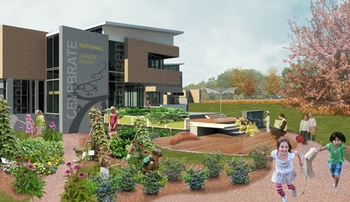 |
Terry Huang, Ph.D. |
A UNMC obesity expert is the main author of a report – Healthy Eating Design Guidelines for School Architecture – released today in the journal Preventing Chronic Disease, published by the Centers for Disease Control and Prevention.
Merging architecture with public health, it details how cafeterias, water fountains, gardens and signage play a key role in establishing a healthy environment.
“We know there is a direct link between student performance and student health,” said Terry Huang, Ph.D., chairman and professor of health promotion, social and behavioral health in the UNMC College of Public Health. “What we want to do is develop evidence-based principles of school design that optimize healthy eating and health practices.”
The guidelines were incorporated into the Buckingham County Primary and Elementary School in a rural, ethnically diverse school in central Virginia. The school district embraced the goal of creating an optimized ‘healthy eating’ learning environment in addition to the goal of creating an energy-efficient building.
 Some of the design principles incorporated include:
Some of the design principles incorporated include:
- A food lab where kids can learn how to prepare healthy foods;
- A cafeteria which facilitates fresh food production;
- A school garden for kids to grow food for the school cafeteria and burn a few calories;
- A lower-stress environment to address light, noise levels, air quality and crowding; and
- Layouts that encourage more movement and the use of attractive water fountains.
“Our goal is to provide fresh, healthy food choices and support school spaces which promote healthy nutrition and health habits,” Dr. Huang said.
Researchers add that even simple changes like providing healthy grab-and-go meal options, avoiding deep-fat fryers and a library of health information and nutrition are improvements that schools can use to promote optimal health.

This should be translated into the work environment as well !